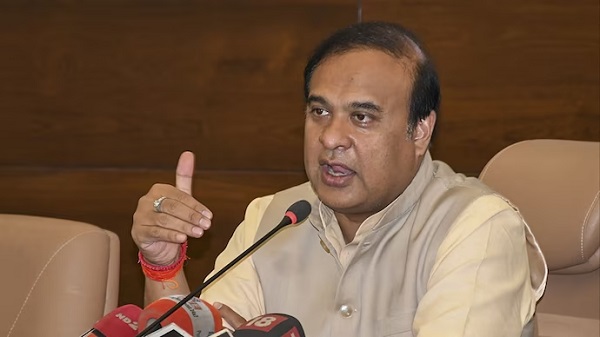
Assam CM Downplays Concerns Over China’s Brahmaputra Dam, Highlights River’s Multiple Origins

 :
| Updated On: 22-Jul-2025 @ 2:57 pm
:
| Updated On: 22-Jul-2025 @ 2:57 pmSHARE
On July 21, Assam Chief Minister Himanta Biswa Sarma addressed growing concerns about China's newly launched $167.8 billion hydropower project on the Brahmaputra River, stating that there is no immediate reason to panic. Speaking to reporters in Guwahati, Sarma acknowledged uncertainties regarding the project's implications for India's northeastern states but emphasized that the Brahmaputra River does not rely solely on water sources from Tibet. He pointed out that the river receives a substantial portion of its flow from Arunachal Pradesh, Bhutan, and rainfall within Assam itself.
Sarma's comments came two days after Chinese Premier Li Qiang officially launched the construction of the massive hydropower project in Nyingchi City, Tibet, near the India-China border in Arunachal Pradesh. The project is designed to feature five cascade hydropower stations and aims to generate more than 300 billion kilowatt-hours of electricity annually—enough to potentially supply over 300 million people. The scale of the project is expected to surpass even China’s Three Gorges Dam, one of the largest in the world.
The announcement of the project has triggered alarm among Indian and Bangladeshi policymakers, environmentalists, and hydrological experts. There is growing concern that such a large infrastructure project could significantly alter water flow downstream, potentially affecting agriculture, biodiversity, and human settlements in India and Bangladesh. Additionally, there are fears that the dam could increase regional vulnerability during periods of geopolitical tension.
When asked about the specific impact on Assam, Sarma responded cautiously, stating that it was too early to determine whether the effects would be positive or negative. He reiterated that the majority of the Brahmaputra’s flow into Assam comes from domestic sources, including local rainfall, and from neighboring Arunachal Pradesh and Bhutan. Therefore, in his view, China’s control over the river’s Tibetan segment may not drastically alter the water availability in Assam.
He also acknowledged that the scientific community remains divided on the environmental impact of the dam. On one hand, reduced water flow could harm local ecosystems and biodiversity; on the other hand, it could potentially act as a natural buffer against flooding during the monsoon season. Sarma admitted that he does not know which viewpoint is correct, underlining the complexity and uncertainty of the issue.
Another major concern is the dam’s location in a seismically active and geologically sensitive zone. The site lies close to a tectonic plate boundary and is one of the rainiest and most earthquake-prone areas in the world. This raises additional safety and environmental questions surrounding the long-term sustainability of such a large-scale infrastructure project.
On the geopolitical front, critics warn that China could potentially use the dam as a strategic tool, especially during conflicts, by controlling or manipulating the water flow to disadvantage downstream countries like India. In response, India is also developing its own hydropower project on the Brahmaputra in Arunachal Pradesh, seen by many as a strategic countermeasure.
Sarma said he believes the Indian central government is either already in discussion with China on the matter or will initiate talks soon. He emphasized that the Centre is in a better position to address the issue diplomatically. The two nations currently exchange hydrological data through the Expert Level Mechanism (ELM), established in 2006, which continues to serve as a key platform for dialogue on transboundary rivers. This mechanism featured prominently in recent high-level diplomatic discussions, including a December 2024 meeting between India’s National Security Adviser Ajit Doval and Chinese Foreign Minister Wang Yi.